Connect With Us
Blog
Items filtered by date: August 2022
Juvenile Plantar Dermatosis
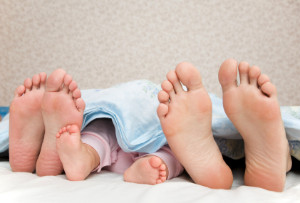
Juvenile plantar dermatosis is a common and chronic dry skin condition of the feet that usually affects pre-adolescent children between the ages of three and 14 years. It is also known as atopic winter feet and forefoot dermatitis. This condition affects boys slightly more often than girls. It is rarely seen in adults but can persist into adulthood. Juvenile plantar dermatosis can be caused by repetitive frictional movements, the occlusive effect of wearing covered footwear (particularly synthetic shoes), excessive sweating, genetic sensitivities, or warm or cool climate changes. This problem is usually visible on the weight-bearing areas of the soles, ball of the big toes, and forefoot of the foot with itchy, sore, shiny, red skin that has a glazed appearance and a loss of the epidermal ridge pattern. Typically, both feet are affected. The most common complication of juvenile plantar dermatosis is painful cracks and fissures, which may become infected. This affliction is sometimes confused with other skin conditions, such as atopic eczema, plantar psoriasis, or tinea pedis. Wearing well-fitting leather shoes, two or more pairs of cotton and wool socks, and changing socks regularly will help reduce friction. Moisturizing the feet will help prevent dry skin. Resting the feet to allow any fissures to heal will help as well. If your child is experiencing problems with the skin of their feet, consult with a podiatrist who can diagnose any conditions and provide options for treatment.
The health of a child’s feet is vital to their overall well-being. If you have any questions regarding foot health, contact Thi Pham, DPM of Foot Specialists of Tri-County. Our doctor can provide the care you need to keep you pain-free and on your feet.
Tips for Keeping Children's Feet Healthy
- Make sure their shoes fit properly
- Look for any signs of in-toeing or out-toeing
- Check to see if they have Clubfoot (condition that affects your child’s foot and ankle, twisting the heel and toes inward) which is one of the most common nonmajor birth defects.
- Lightly cover your baby’s feet (Tight covers may keep your baby from moving their feet freely, and could prevent normal development)
- Allow your toddler to go shoeless (Shoes can be restricting for a young child’s foot)
- Cut toenails straight across to avoid ingrown toenails
- Keep your child’s foot clean and dry
- Cover cuts and scrapes. Wash any scratches with soap and water and cover them with a bandage until they’ve healed.
If you have any questions, please feel free to contact our offices located in Sulphur Springs, Winnsboro, and Pittsburg, TX . We offer the newest diagnostic and treatment technologies for all your foot care needs.
Cracked Heels and Sandals
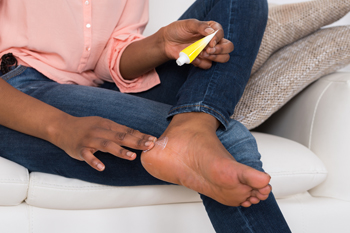
Cracked heels are an unsightly and unattractive affliction of the foot that primarily affects the skin surrounding the heels. If you have cracked heels, you might notice that the skin on the heels has become very dry and hard calluses have started to form. Although there are many potential causes of cracked heels, wearing flip flops or sandals without a back strap could be contributing to this problem. Despite the fact that these shoes can be convenient to wear during the summer time, they effectively expose your heels to the air in such a way that can dry out the skin, making cracked heels more likely. Additionally, the fact that these shoes offer little arch or heel support cushioning is problematic. The lack of cushioning forces the individual to exert more pressure on their feet when walking, sometimes causing the skin to break or crack. One simple way of preventing this from happening is by choosing to wear shoes that cover more of the skin on the foot, as opposed to flip flops or open-back sandals. Wearing shoes that cover more skin will provide the skin on the heel with the coverage that it needs to be protected. You might even consider preventing cracked heels by applying a daily moisturizer and drinking plenty of water to stay hydrated. If you wear flip flops or sandals, consider contacting a podiatrist to learn more about your risk of developing cracked heels.
Cracked heels are unsightly and can cause further damage to your shoes and feet. If you have any concerns, contact Thi Pham, DPM from Foot Specialists of Tri-County. Our doctor can provide the care you need to keep you pain-free and on your feet.
Cracked Heels
Cracked heels appear unappealing and can make it harder for you walk around in sandals. Aside from looking unpleasant, cracked heels can also tear stockings, socks, and wear out your shoes. There are several methods to help restore a cracked heel and prevent further damage.
How Do You Get Them?
Dry skin is the number one culprit in creating cracked heels. Many athletes, walkers, joggers, and even swimmers suffer from cracked heels. Age and skin oil production play a role to getting cracked heels as well.
Promote Healing
Over the counter medicines can help, especially for those that need instant relief or who suffer from chronic dry feet.
Wear Socks – Wearing socks with medicated creams helps lock in moisture.
Moisturizers – Applying both day and night will help alleviate dryness which causes cracking.
Pumice Stones – These exfoliate and remove dead skin, which allows for smoother moisturizer application and better absorption into the skin.
Change in Diet
Eating healthy with a well-balanced diet will give the skin a fresh and radiant look. Your body responds to the kinds of food you ingest. Omega-3 fatty acids and zinc supplements can also revitalize skin tissue.
Most importantly, seek professional help if unsure how to proceed in treating cracked heels. A podiatrist will help you with any questions or information needed.
If you have any questions, please feel free to contact our offices located in Sulphur Springs, Winnsboro, and Pittsburg, TX . We offer the newest diagnostic and treatment technologies for all your foot care needs.
Causes and Symptoms of Gout
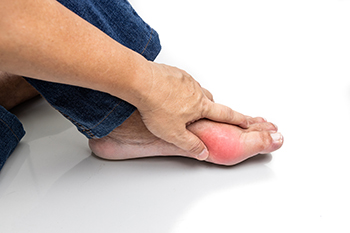
Gout is a common form of inflammatory arthritis that can be extremely painful. It generally attacks a joint in the body, frequently the big toe. The joint becomes inflamed during what is termed a flare-up. Usually the inflammation recedes after a few days or a week. Symptoms of gout are pain, redness, swelling, tenderness to touch, and heat. Men are more likely to have gout than women. Obesity, genetics, high blood pressure, consuming high levels of alcohol, and eating foods rich in purines are risk factors. Purines are contained in red meat, organ meat, and some seafood. The purines break down into uric acid, which then can crystallize in the joint and result in inflammation. While there is not a cure for gout, it can be treated. If you have frequent problems with gout in the big toe, please see a podiatrist for more information and possible treatment options.
Gout is a foot condition that requires certain treatment and care. If you are seeking treatment, contact Thi Pham, DPM from Foot Specialists of Tri-County. Our doctor will treat your foot and ankle needs.
What Is Gout?
Gout is a type of arthritis caused by a buildup of uric acid in the bloodstream. It often develops in the foot, especially the big toe area, although it can manifest in other parts of the body as well. Gout can make walking and standing very painful and is especially common in diabetics and the obese.
People typically get gout because of a poor diet. Genetic predisposition is also a factor. The children of parents who have had gout frequently have a chance of developing it themselves.
Gout can easily be identified by redness and inflammation of the big toe and the surrounding areas of the foot. Other symptoms include extreme fatigue, joint pain, and running high fevers. Sometimes corticosteroid drugs can be prescribed to treat gout, but the best way to combat this disease is to get more exercise and eat a better diet.
If you have any questions please feel free to contact our offices located in Sulphur Springs, Winnsboro, and Pittsburg, TX . We offer the newest diagnostic and treatment technologies for all your foot and ankle needs.
Pesky, Persistent Toenail Fungal Infections
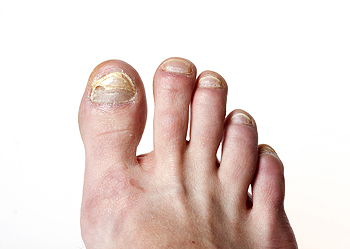
Onychomycosis is the medical term for toenail fungus. While different organisms may be responsible for the infection, dermatophytes are the most common culprits by far. Toenail fungus is a bothersome condition that causes the nails to become discolored, thickened, distorted, ragged, crumbly, brittle, and even smelly in certain cases. Older adults are more prone to contracting a toenail infection because as we age, our nails become more brittle. Brittle nails can crack, which can make it easier for the fungal organism to creep inside the nail and infect it. If you detect any of the symptoms mentioned here, it is advised to seek the care of a podiatrist. Toenail infections can be very difficult to treat at home, given that the organism can burrow deep into the multiple layers of the nail or underneath the nail, making it difficult to target and kill effectively and permanently. Also, home treatment may be risky for people with weakened immune symptoms, diabetes, or circulatory issues.
For more information about treatment, contact Thi Pham, DPM of Foot Specialists of Tri-County. Our doctor can provide the care you need to keep you pain-free and on your feet.
Toenail Fungus Treatment
Toenail fungus is a condition that affects many people and can be especially hard to get rid of. Fortunately, there are several methods to go about treating and avoiding it.
Antifungals & Deterrence
Oral antifungal medicine has been shown to be effective in many cases. It is important to consult with a podiatrist to determine the proper regiment for you, or potentially explore other options.
Applying foot powder on the feet and shoes helps keep the feet free of moisture and sweat.
Sandals or open toed shoes – Wearing these will allow air movement and help keep feet dry. They also expose your feet to light, which fungus cannot tolerate. Socks with moisture wicking material also help as well.
If you have any questions please feel free to contact our offices located in Sulphur Springs, Winnsboro, and Pittsburg, TX . We offer the newest diagnostic tools and technology to treat your foot and ankle needs.
Heel Pain in the Morning?
Stretching for Runners
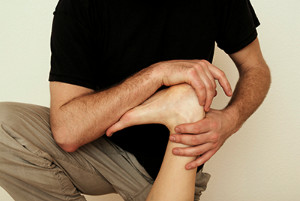
One of the most critical, yet often overlooked, ways to improve and maintain good foot health is to regularly perform stretches and exercises for the feet. These stretches are important for several reasons. Most importantly, regularly and intentionally stretching the feet is an excellent way to improve the strength of the muscles in the feet. When the muscles in the feet are stronger, this can make the foot more stable and agile. This benefit of increased stability and agility can be especially important for runners who can benefit from this the most. For example, when someone runs, they can put up to two to three times their natural body weight onto one foot at a time. Therefore, strengthened foot muscles from stretching can help runners go faster and further. Additionally, stretching can help your feet by making suffering an injury less likely. When your feet are stronger and the muscles are more fortified, rolling your feet inward becomes less likely. Stronger feet are also more protected against conditions such as plantar fasciitis, neuromas, and stress fractures. Again, runners stand to benefit because suffering from an injury or foot affliction can make continuing to run difficult. If you are a runner or simply want to improve the strength of your feet, consider consulting a podiatrist who can teach you helpful stretches for the feet.
Stretching the feet is a great way to prevent injuries. If you have any concerns with your feet consult with Thi Pham, DPM from Foot Specialists of Tri-County. Our doctor will assess your condition and provide you with quality foot and ankle treatment.
Stretching the Feet
Stretching the muscles in the foot is an important part in any physical activity. Feet that are tight can lead to less flexibility and make you more prone to injury. One of the most common forms of foot pain, plantar fasciitis, can be stretched out to help ease the pain. Stretching can not only ease pain from plantar fasciitis but also prevent it as well. However, it is important to see a podiatrist first if stretching is right for you. Podiatrists can also recommend other ways to stretch your feet. Once you know whether stretching is right for you, here are some excellent stretches you can do.
- Using a foam roller or any cylindrical object (a water bottle or soda can will do), roll the object under your foot back and forth. You should also exert pressure on the object. Be sure to do this to both feet for a minute. Do this exercise three times each.
- Similar to the previous one, take a ball, such as a tennis ball, and roll it under your foot while seated and exert pressure on it.
- Grab a resistance band or towel and take a seat. If you are using a towel, fold it length wise. Next put either one between the ball of your foot and heel and pull with both hands on each side towards you. Hold this for 15 seconds and then switch feet. Do this three times for each foot.
- Finally hold your big toe while crossing one leg over the other. Pull the toe towards you and hold for 15 seconds. Once again do this three times per foot.
It is best to go easy when first stretching your foot and work your way up. If your foot starts hurting, stop exercising and ice and rest the foot. It is advised to then see a podiatrist for help.
If you have any questions, please feel free to contact our offices located in Sulphur Springs, Winnsboro, and Pittsburg, TX . We offer the newest diagnostic and treatment technologies for all your foot care needs.

